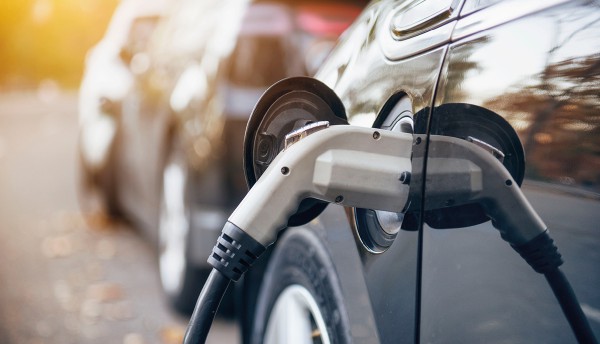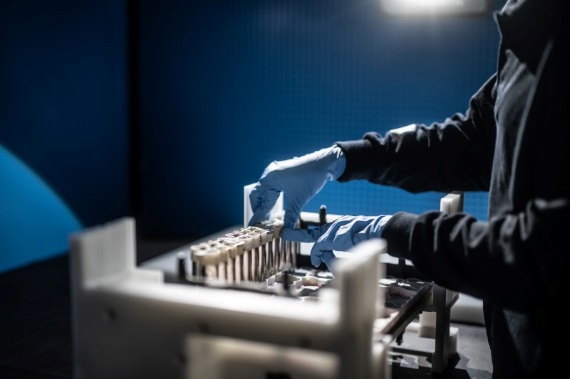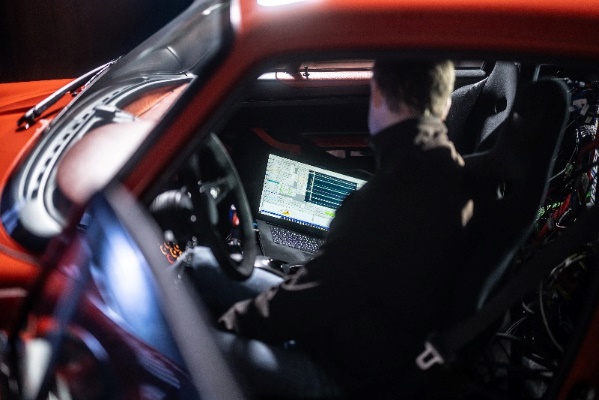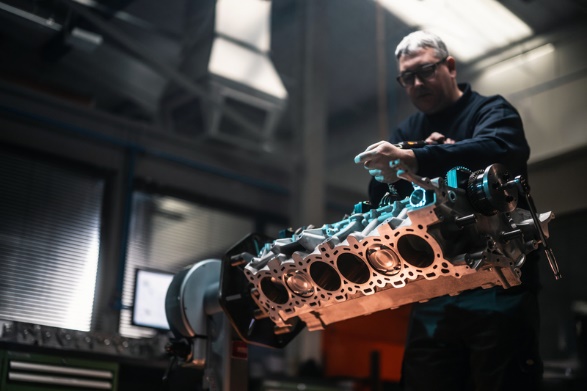
The automotive industry is at a crossroads, facing intense pressure to meet strict emissions regulations while catering to a growing demand for efficient and sustainable vehicles. The integration of battery systems with internal combustion engines (ICEs) in hybrids is not just an option; it is a necessity. This integration poses challenges that require a sharp focus on performance, efficiency and compliance. At the heart of this effort is the need for detailed drive-cycle models that inform the design of powertrains, ensuring that electric and traditional components work together effectively.
As electrification gains momentum, advancements in battery technology are crucial for achieving ultrafast charging. The charging rate, or C-rate, is a key measure that dictates how quickly a battery can be charged and has direct implications for thermal management. High charging rates generate heat, which must be managed effectively to maintain battery life and performance.
Moreover, the tightening emissions regulations demand innovative solutions for engine operation and design. Hybridization plays a key role in reducing engine load during critical phases, boosting efficiency and lowering emissions. Material selection becomes critical as manufacturers aim to optimize weight and thermal performance while navigating environmental concerns tied to resource extraction.
The push for alternatives to rare earth magnets in traction motors underscores the industry's commitment to sustainability and cost reduction. Exploring technologies that eliminate reliance on these materials not only cuts costs but also strengthens supply chain resilience. As the automotive sector adapts to these pressing challenges, the future of hybrid and electric vehicles hinges on relentless innovation and practical engineering solutions. To gain deeper insights, we spoke with Mike Bassett, engineering director, MAHLE Powertrain.

[Source: MAHLE Powertrain]
Key takeaways:
- Integration of battery systems and ICEs: Integrating battery systems with ICEs in hybrid vehicles requires a detailed understanding of vehicle performance targets, drive-cycle modeling, and the interaction between the ICE and hybrid systems. Key considerations include charge rate capability, pack durability and compliance with safety standards.
- Thermal management and charging infrastructure: Effective thermal management strategies are critical for high-performance batteries, particularly during fast charging. The cooling requirements must be addressed to handle high C-rates, and advancements in charging infrastructure are necessary to support ultrafast-charging systems, which will impact battery design and longevity.
- Regulatory influence on design: Emerging global emissions regulations significantly shape powertrain design and development. Compliance with stringent emissions limits necessitates optimizing engine operation, particularly during critical phases such as engine start, and can influence the choice of materials and technologies used in powertrain systems.
- Alternatives to rare earth magnets: While rare earth magnets offer high-power density for traction motors, their environmental impact and supply chain risks prompt exploration of alternative technologies, such as the Magnet-free Contactless Transmitter (MCT) Electric Motor, which eliminates the need for rare earth materials by using induction for magnetic field generation.
How does MAHLE Powertrain approach the integration of battery systems with ICEs in hybrid vehicles, and what key challenges do you face in optimizing this integration for efficiency?
Mike Bassett: That is a broad question, and the answer depends on the application and targets for the vehicle. At the start of every project, the team will work closely with customers to define vehicle performance targets. We develop a detailed drive-cycle model of the vehicle and the complete powertrain system to cascade vehicle-level targets to system-level targets. This is crucial for evaluating the performance of proposed system layouts under various drive cycles or extreme operating conditions. The vehicle model helps determine power and capacity requirements at the pack level, particularly the required discharge rate capability, which relates to vehicle power, maximum speed or acceleration performance, as well as energy capacity, determined by target electric driving range. This understanding allows us to analyze the interaction between the ICE and the hybrid system, including the control strategy's effect on component loading, especially the battery.
Once the performance targets for the battery system are set, we select the most suitable cell for the battery pack. Charge rate capability is assessed, considering regenerative braking events and recharge time. Pack durability and life are also key, factoring in cycling rates, depth of discharge and temperature profiles during usage. Other vehicle-level constraints, such as packaging limitations and weight targets, must also be considered. Safety requirements for the application and adherence to standards are essential.
Using our database of cells, we define a pack concept layout based on initial pack requirements. This database combines published cell data and our in-house testing. Depending on the pack-level targets from vehicle simulation analysis, we can compare various pack configurations to identify the best-matching cell.
Our engineering team can then make an initial cell selection and determine the pack configuration, including string length and the number of parallel strings. Cell life, cost and availability are also considered in the selection process. Once the cell is chosen and the layout is finalized, the vehicle simulation model is updated with the pack configuration and cell characteristics. Incorporating data such as cell internal resistance and its variation with temperature and state of charge allows us to calculate required heat rejection profiles, initial sizing for the vehicle-side cooling system, and battery coolant flow rates.
At this stage, we begin the 3D concept design for the pack, focusing on cell mounting, retention and compression requirements for pouch cell concepts. Cell-cooling requirements and overall cooling system concepts must also be addressed. We carefully analyze cell/tab and tab/busbar connections due to their impact on current flow and ohmic heating. The integration of cell-sensing boards, the master BMS [battery management systems], fuses, contactors and connectors must be effectively packaged. The venting system must be defined and analyzed to ensure safe evacuation of vent gases.
Given our experience integrating battery systems with ICE in hybrid vehicles, we understand the need for the battery pack to withstand forces during use, and extreme shock loading events are thoroughly analyzed. To enable a battery pack to be shipped or used on public highways, it must meet relevant standards. Transportation of batteries falls under Article 38.3 of Part 3 of the UN Manual of transport tests and standards for dangerous goods. In Europe, electric vehicles must comply with UNECE regulation 100. Both regulations require the battery to undergo mechanical shock and vibration tests. These profiles can be simulated and applied to the pack design using finite element analysis (FEA). We conduct FEA-based optimization for modal response, vibration response and shock response, including crash loads. The simulation results guide detailed optimization of the pack design. Based on the analysis, we make modifications to reduce stresses, eliminate unnecessary material and improve stiffness, achieving a more robust design with significant weight savings.
Can you elaborate on the thermal management strategies used in your powertrain systems, particularly regarding the cooling of high-performance batteries during charging cycles and the compatibility of your systems with various charging infrastructures, including fast and wireless charging?
In addition to structural optimization, the thermal behavior of the battery pack is analyzed using CFD [Computational Fluid Dynamics] techniques. Attention is paid to the thermal interaction between conductors and cells. Heat generated within the cells and conductors drives heat flow, with cells typically having an upper temperature limit of around 65°C, constrained by electrolyte degradation above this temperature.
Simulations examine the thermal performance of the battery under demanding load cases, particularly high-power charging. CFD analysis reveals current flow within the entire battery electrical system and heat flow. Current density in the cell tab-to-busbar connection and conductors enables detailed optimization of conductor design to reduce weight, cost and complexity.
For battery packs focused on high-performance applications, either for high-power output or fast charging, bespoke optimized cooling solutions are offered. Experience in designing battery packs spans all cell form factors and a variety of cell chemistries, including passive air-cooling strategies, advanced water-glycol cooling systems and immersion cooling of ultrahigh C-rate packs using dielectric fluids.
In applications requiring extreme performance, drive cycle models are linked to integrated thermal system models and detailed 3D CFD models of the battery. This allows for dynamic exploration and optimization of thermal behavior down to the cell level, pushing designs to the limits of optimization.
This capability has been developed over 20 years. As an agile engineering expert in fast-growing automotive sectors, we have pioneered first-to-market innovation across powertrain technologies.

Source: MAHLE Powertrain
What advancements have you made in regenerative braking technologies, and how do these improvements influence the overall efficiency and energy recovery of hybrid and electric vehicles?
The limit of regenerative braking is primarily a vehicle dynamics and stability issue. Our role is to design powertrain systems and battery packs that fully utilize available regenerative energy. The efficiency of the regeneration process depends on system losses, such as motor placement and gear transmission losses between the wheels and the motor. We collaborate with clients to deliver a complete system from concept to validation, ensuring that the layout for their hybrid or battery-electric powertrain system maximizes performance, efficiency and flexibility for the intended application.
How do emerging global emissions regulations influence the design and development of your powertrain technologies, and what role does material selection play in enhancing performance, weight reduction and thermal conductivity?
Increasingly stringent emissions limits significantly affect powertrain layouts. Since September 2017, Real Driving Emissions (RDE) testing has been part of the regulatory approval process to ensure emissions in real-world conditions correlate with those in laboratory tests. The introduction of RDE testing has expanded the engine operating region under scrutiny during compliance testing.
The most critical period is immediately after engine start, when the emissions aftertreatment has not reached operating temperature. It is vital to minimize engine-out emissions while lighting off the primary catalysts quickly. The design of the engine combustion system is crucial for compliance with emissions regulations.
Other important factors include eliminating high load or highly transient engine operation. Hybridization can reduce engine loading during the light-off period, which can be maximized with a range extender (REx) arrangement. With [an] REx, the engine operates at a fixed light load and speed until the aftertreatment system reaches operating temperature, remaining decoupled from driver dynamics.
ICE powertrain hybridization highlights the relationship between electrification and ICE technology. Both technologies complement each other, providing a superior powertrain option in many cases. Electrification can enhance power and dynamic response from an ICE while minimizing exposure to scenarios that increase exhaust emissions. In some cases, ICE technology offers range, weight and operability advantages over pure BEVs [battery-electric vehicles].
To enable rapid heating of the aftertreatment system, it should be positioned close to the engine within the exhaust stream, minimizing thermal mass between them. Initial engine operation typically uses heavily retarded ignition timing to increase exhaust gas temperature at any operating point. The combustion system must tolerate this timing while maintaining stable combustion.
MAHLE Jet Ignition® (MJI) uses a prechamber to produce jets of partially combusted gases that induce ignition in the main combustion chamber, enabling rapid, stable combustion. Both active and passive configurations have been developed, with a small auxiliary prechamber in the main combustion chamber. The active system includes a spark plug and a low-flow direct injection (DI) fuel injector, while the passive system draws its charge from the main chamber during the compression stroke.
The active MJI system reduces fuel consumption and CO2 through lean gasoline operation, which traditionally requires complex aftertreatment systems to manage increased NOx [nitrogen oxides] emissions. The active MJI system operates stably in the extreme lean region (beyond λ = 1.5), maintaining lower gas temperatures throughout the cycle, which reduces NOx formation. This is achieved by using the prechamber-mounted fuel injector to add supplementary fuel to the charge from the main chamber. The prechamber contains a roughly stoichiometric mixture, which is stably ignited via the spark plug.
The passive MJI system, developed for stoichiometric operations, relies on exhaust gas recirculation (EGR) to dilute the charge for enhanced efficiency.
For both active and passive MJI systems, once the charge in the prechamber ignites, it discharges fast-moving, superheated jets of partially combusted gases through a multi-orifice nozzle into the main combustion chamber. This design achieves lower crevice volume and heat loss due to its compact size and small nozzle diameters that promote flame quenching, allowing jets to penetrate deep into the main chamber before igniting the charge.
Over the years, significant development has enhanced the passive MJI system to enable whole map λ = 1 operation, ensuring idle operation and catalyst light-off capability equivalent to conventional spark plug systems. The passive MJI system combines a high geometric compression ratio, Miller cycle operation and EGR to achieve high brake thermal efficiency. It functions across the entire engine operating envelope without requiring a second ignitor, making it easy to implement into existing cylinder heads. A mass-market application of this technology is expected to launch soon in a new dedicated REx engine developed for a Chinese manufacturer, applicable for passenger cars and light commercial vehicles in China and East Asia. The resulting port fuel-injected, 1.0-liter, 2-cylinder, turbocharged gasoline engine achieves a brake thermal efficiency exceeding 42%.
In response to evolving global emissions regulations, flexibility and innovation across powertrain technologies remain priorities. A technology-agnostic approach allows seamless adaptation to changing legislative demands and regional market needs. Material selection and system-level optimization are central to achieving performance, efficiency and compliance, ensuring the right solution is offered at the right time, regardless of propulsion architecture.

Source: MAHLE Powertrain
Given current trends in electrification, how do you foresee the evolution of hybrid systems in the next five years, particularly in response to regulatory changes and market demands, and what are the key technical considerations when collaborating with OEMs on new powertrain systems?
Increasingly stringent fleet average tailpipe CO2 targets for the EU require a larger proportion of manufacturers’ fleets to be fully electrified or hybridized with significant plug-in capability. Manufacturers will meet fleet CO2 obligations through a variety of vehicles featuring different technologies, including conventional ICE, mild hybrids, plug-in hybrids and full battery-electric vehicles. The key is to sell enough low-emission models to achieve the required fleet average CO2 level. Increasing the battery size of a PHEV [plug-in hybrid electric vehicle] is critical, as it enhances the electric driving range and lowers the CO2 tailpipe weighting factor (based on UN/ECE Regulation 101), leading to a reduced vehicle CO2 rating.
Beyond 2030, plug-in hybridization with a significant electric driving range will be essential for meeting fleet CO2 targets. Once vehicles have substantial electric drive capability, other benefits can improve ICE efficiency and emissions performance. First, dynamic loading can be removed from the engine, allowing it to operate in a steady-state manner, similar to REx units. The goal is to maintain battery state of charge (SOC) after depletion. When the electric drive system can eliminate the entire dynamic load requirement, the engine only needs to maintain battery SOC. Second, since dynamic load changes are managed by the electric drive unit, the engine does not need to respond instantly to driver demand, allowing for optimization within a narrower operating range and steady-state operation, reducing complexity in prime-mover ICEs. A third benefit is that the ICE can avoid significant loading until the exhaust aftertreatment reaches the temperature needed for effective conversion, which is crucial given the recent addition of Real Driving Emissions (RDE) testing to vehicle certification, where full-load driver demand can occur shortly after engine start.
The series hybrid layout also benefits OEMs. One advantage is installation flexibility; with no mechanical link between the engine and wheels, the REx unit can be placed anywhere in the vehicle. Eliminating a mechanical connection to the wheels allows for optimization of the engine's operating strategy for catalyst light-off, NVH [noise, vibration and harshness], and fuel-efficient operation. Additionally, there is no need for transient engine operation, and the limited engine operating region reduces the requirement for expensive engine technologies.
However, the series hybrid arrangement has drawbacks. Firstly, it requires two electrical machines and their respective power electronics — one for tractive power and the other for the generator — making the system more expensive. Secondly, converting mechanical energy to electrical and back to mechanical can introduce additional inefficiencies.
The driveline arrangement of a parallel hybrid electric vehicle provides a direct mechanical coupling between the ICE and the wheels, offering two potential benefits over the series-hybrid arrangement. First, the electrical system is simplified by omitting the generator and inverter unit, potentially saving costs. Second, driving the wheels directly with the engine may improve efficiency by reducing conversion losses. However, this driveline layout has compromises compared to a series hybrid, including a more costly transmission and less freedom in vehicle packaging, as the ICE must be located with the driveline. In a parallel-hybrid configuration, engine speed is tied to vehicle speed in discrete steps (gear ratios), but instantaneous engine load can still be managed via the traction motor to maintain acceptable NVH and maximize engine efficiency.
The dual-mode hybrid arrangement combines the best features of series and parallel arrangements. A few years ago, a hybrid technology pathway based on a dual-mode hybrid solution, the MAHLE Modular Hybrid Powertrain (MMHP), was proposed. This solution is optimized for the future global automotive market to meet emissions and CO2 targets for 2030 and beyond. When battery SOC is high, the vehicle operates as a pure EV. Once the battery is depleted, the system functions as a series hybrid at low speeds, benefiting from NVH and operational flexibility. At higher speeds, the engine connects directly to the wheels via a gearbox, with multiple ratios allowing flexibility in engine operating speed. The traction motor connects directly to the wheels, enabling seamless torque delivery during gear shifts. The drawbacks of this arrangement are the complexities of both series and parallel architectures, requiring two electric machines and a multispeed transmission (though with fewer ratios).
The MMHP concept is based on a high-voltage PHEV architecture, integrating a dedicated hybrid internal combustion engine (DHE) with a dual-mode hybrid electric drive featuring two electric machines. The traction motor provides full vehicle dynamic performance and maximum speed capability without DHE assistance, improving emissions and reducing aftertreatment complexity by avoiding DHE cold starts at high-power demand. Additionally, the direct drive arrangement enables seamless torque delivery, allowing for a simple automated manual transmission. This design reduces costs, complexity, package size and weight compared to current hybrid powertrains, also aiming for low drive-cycle CO2 figures.
The DHE maximum power output can be tailored to meet vehicle requirements, but the maximum engine speed should be limited to 4,000 rev/min to mask engine operation with vehicle aerodynamic and tire noise. A two- or three-cylinder layout minimizes engine package volume and reduces part count and weight. The combustion system uses the passive MJI system, with port fuel injection (PFI) and fixed valve event timing to reduce costs. To maximize efficiency, the engine incorporates a high degree of Miller-cycle operation and a high geometric compression ratio (CR), operating with a single, fixed geometry turbocharger and an electrically controlled waste-gate actuator. An external cooled exhaust gas recirculation (EGR) system is also employed for further efficiency gains.
Recently, REx engines have gained popularity among manufacturers. This is an area where development has been ongoing since 2010, focusing on identifying requirements and challenges in contemporary engine components. The REx unit was developed to maintain low production costs while achieving performance targets in a compact package. This experience has facilitated successful collaborations with leading OEMs in designing bespoke REx engines.

Source: MAHLE Powertrain
Given the ongoing challenges related to rare earth materials, does MAHLE Powertrain still consider rare earth-based magnets to be the optimal solution for traction motors, or are they actively investigating alternative technologies?
For some applications, high-power density is essential, making it difficult to compete with motors containing rare earth magnets. Rare earths are not as rare as their name suggests, but their extraction and processing are complex, often environmentally harmful, and create dependence on imports, mainly from China. Eliminating rare earths offers advantages in manufacturing costs, sustainability and supply capability.
The Magnet-free Contactless Transmitter (MCT) Electric Motor achieves this by using an externally excited synchronous machine design. In this design, the magnetic field required for operation is generated contactlessly through induction by exciter coils in the rotor. This technology avoids the need for permanent magnets and rare earth elements like neodymium.
How might the trend of ultrafast charging in China impact the cooling requirements of batteries due to the high charging rates?
Ultrafast charging is a significant factor to consider when specifying and designing the battery pack. A key metric is the charging C-rate, which is the charging (or discharging) power divided by the storage capacity of the pack. For example, charging a 1-MWh battery at 1 MW results in a 1C charge rate, which is not impressive. Charging a 100-kWh battery at 1 MW results in a 10C charge rate, which is more challenging and requires greater engineering effort for an effective cooling solution and typically a higher technology cell.
The C-rate also indicates how long it will take to fully recharge the pack. Charging at 1C means it takes about 1 hour to charge from fully discharged to fully charged. A 10C charge rate means it would take 1/10th of an hour (6 minutes) for the same event. This is an oversimplification, as batteries cannot usually be charged at high C-rates when fully depleted or nearly fully charged, and cell temperatures (which increase during charging) will limit the charging rate.
Recent developments in battery-cell technologies have resulted in shorter charging times becoming more common, even in high-volume production vehicles. As cell technologies advance, the focus will shift to charging hardware and the power infrastructure needed to support chargers. Passenger car charging systems are moving toward megawatt-scale (1,000 kW), requiring new charging technologies and fundamental changes to the power grid to supply green electricity to these stations. Innovation in cooling for the charging system, cables and batteries will also be necessary to enable faster charging times while minimizing the impact on battery life span.
State-of-the-art battery development centers in Northampton, UK, and Stuttgart, Germany, conduct comprehensive testing and validation of battery modules and complete packs with up to 1 MW of electrical power. Real-world drive cycle conditions are simulated with extreme charging and discharging rates, while packs are subjected to harsh climatic conditions, including thermal shock testing.








